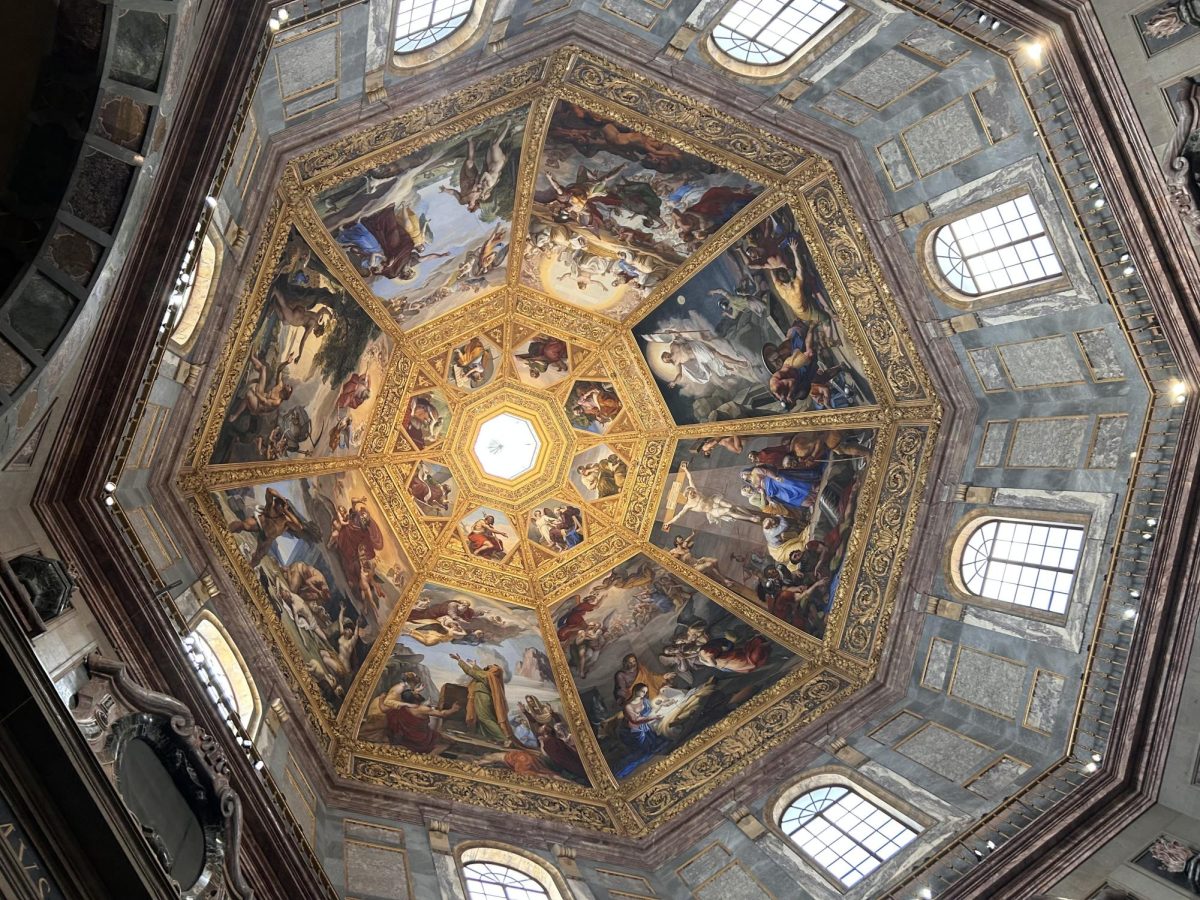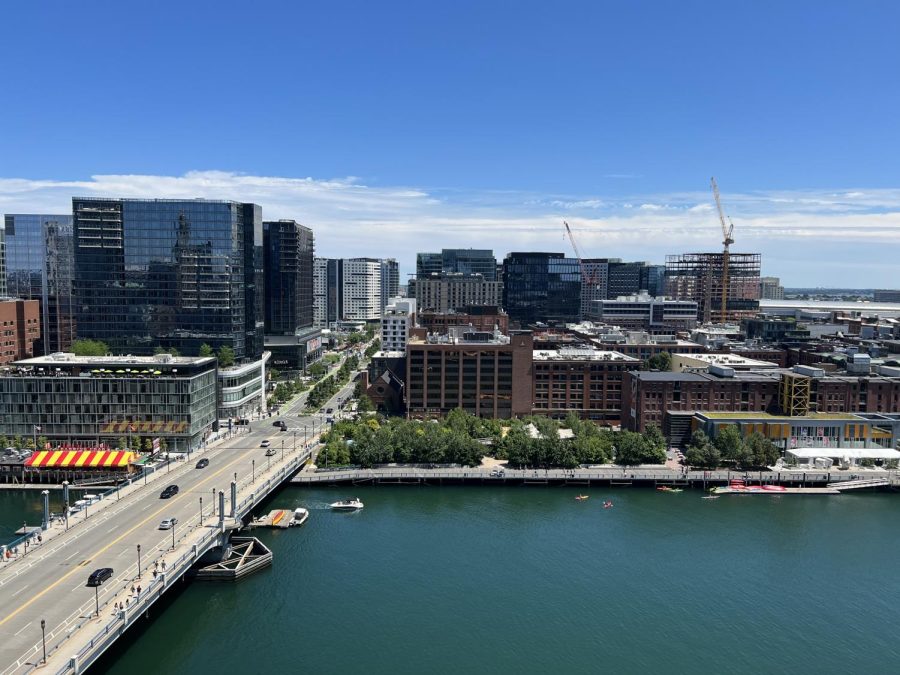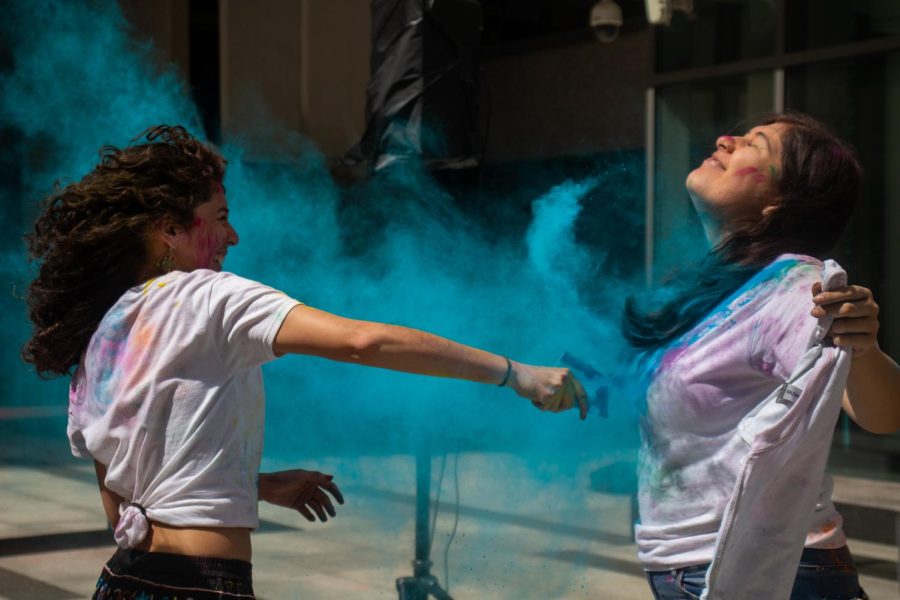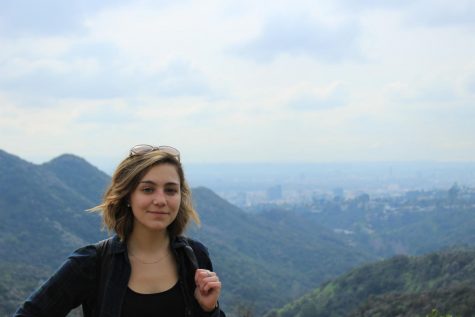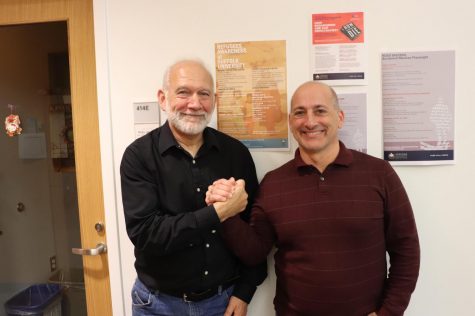
Professor Ken Martin with Armenian researcher George Aghjayan
With the collapse of the Ottoman Empire in 1922, millions of Armenians were massacred in a brutal attempt at mass extermination administered by the Turkish government. Although it is still denied by Turkey, the Armenian genocide wiped out more than half of the Armenian population and displaced many of the survivors – leaving those with Armenian descent confused about where exactly their roots came from.
“I want for you to think about your personal identity,” said independent Armenian genealogy researcher George Aghjayan to professor Ken Martin’s photojournalism class this past Monday. “The genocide happened over 100 years ago, but its ripples are still being felt today by the descendants of those involved.”
Aghjayan visited Martin’s photojournalism class to further explain the Armenian immigration crisis and the impact it has had on Armenian descendants almost a century later. After graduating from Worcester Polytechnic Institute (WPI) with a bachelors of science in Actuarial Mathematics, Aghjayan worked in insurance and structured finance until retiring in 2014 to focus on Armenian research studies.
Aghjayan has done in-depth research within Armenian, U.S., Ottoman and Syrian resources to help rebuild families. After learning his family’s story and doing more research into Armenian lineage, Aghjayan discovered more about his own family.
By traveling throughout Turkey and documenting stories of various Armenians he met along the way, Aghjayan has helped make connections between other Armenian families.
Both having Armenian roots themselves, Martin and Aghjayan expressed how important it is for Armenians specifically to be aware of their genealogy.
“There was a complete rupture in our families due to the Armenian genocide,” said Aghjayan. The genocide separated many families and has caused a significant loss of identity through the global Armenian community.
After the genocide, the remaining Armenians were forced to convert to Islam and became dead to their descendants. Those that were forced to renounce their Christian beliefs and become Muslim were considered a part of the 1.5 million Armenians that died within the genocide.
“Being Armenian and being Christian is very tied together,” said Aghjayan. “The only reason there are still Armenians living is because they did not convert to Islam. The only reason they are still considered Armenian is because they remained Christian.” Those that escaped without converting to Islam were able to maintain their Armenian-Christian identity.
Since Armenians were being forced to give up their previous identity, many were forced to fight against the Armenians.
“There are perpetrators on both sides in some families,” said Aghjayan. “Think about how, psychologically, that would impact you.”
Armenia was formed at a very volatile part of the world, according to Aghjayan. Being at the cross-roads of Europe, Asia and Africa, Armenia was subjected to many different migrations and battles over centuries that slowly forced Armenians out of their native land.
The first major massacre of Armenians occurred in the 1890s and targeted men. Many left the country at that time and came to Worcester – establishing the first real community of Armenians in the U.S. From there, the next major movement of Armenians occurred after the genocide that began in 1915.
With passion in his voice, Aghjayan told the story of how his grandmother saw her father killed and left decapitated by the side of a river. Aghjayan explained that two of her sisters were marched into the desert and never heard from again while another starved to death in a Muslim orphanage.
Despite all odds, his grandmother survived the war by working as a slave for six years to a Muslim family. She was rescued by one of her sisters who survived the war by marrying a Muslim man. Together they escaped at the war’s conclusion and made it to Canada before they eventually settled in Worcester.
“Most people feel that the records were destroyed and there was nothing to be found. As the churches were burned and the people were killed, the records were destroyed,” said Aghjayan. “That is largely true but not entirely.”
Aghjayan’s research in the Ottoman Archives opened his eyes to a plethora of Armenian, Turkish and Kurdish records.
Throughout his travels, Aghjayan encountered many Armenians in search of their relatives. He ventured to villages all across Turkey taking photographs of Armenians and telling their stories – making connections between families along the way utilizing the research he had been doing for years.
Aghjayan emphasized that although the genocide occurred over 100 years ago, it is crucial to comprehend the impact that it has had so much later.
“It’s about the experience of a group of people that suffered trauma and what that means many years later to their descendants – not just at the time that it’s happening,” said Aghjayan.


